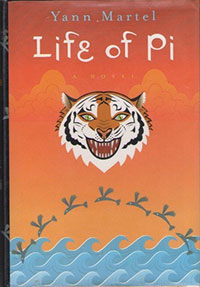

By Matt Cutugno
Indio, CA, USA

Matt Cutugno
This is not to be a review of The Life of Pi by Yann Martel. Millions of copies of the book have already been sold and additional millions of people have seen the movie. There will barely be a synopsis; no spoiler alerts, no crucial plot elements will be revealed. Rather, I'd like to ponder on why I think the book was especially successful and the lesson for any writer that lies within that fact.
I think we can all appreciate that it is a sharply written, earnestly executed, and original work. Mr. Martel brings authority and a sense of humor to Pi's story and his themes of "What is Truth" and "Who is God" are strong. But a lot of novels are well written, and a lot of writers have a sense of humor. What is it that makes some books catch on and become the kind of phenomenon that inspires conversation among readers and resonates through office work places and church groups and family dinners?
Whatever that something is, The Life of Pi has it.
The novel is divided into three parts. The first introduces the main character, Piscine Molitor Patel, who is named after a swimming pool in France. We learn of his struggles with his name (classmates call him "pissing") and his decision to go by the name of Pi (the irrational number). We learn of his family's zoology work in Pondicherry, India. I admire the writer's tone in this section as we learn about his family relationships, his awakenings to spirituality, and his observations on certain strange and exotic animals. (For example his revelations on the attitudes and habits of sloths are a lot of fun to read.)

The father decides to move the family (and zoo animals) to Canada by way of a Japanese freighter. A terrible storm sinks the ship and young Pi is stranded on a lifeboat with a maimed zebra, an orangutan, a hyena, and Richard Parker—a fierce Bengal tiger. This long journey of survival takes up the second section of the novel. Interesting and even fantastic things happen throughout these pages, and a reader would be excused in thinking that the work is a fantasy, a pleasant and entertaining one.
The third part of the novel takes place after Pi is rescued. He is interviewed at his hospital bed by two men from the Japanese freight company—they want to know why the ship sank and how Pi survived. He tells them his story and they simply don't believe it. This causes Pi to come up with an alternative reality of what happened to him on the lifeboat. While this version is plausible, it is completely different than what the reader has taken in up to that point. Where the first two thirds of the book is fanciful, Mr. Mann now turns the tables to great effect. And at the end we are left with an open-ended and ultimately unanswerable question—which version of reality is real? And readers of the book (and viewers of the movie) are left to ask others "What do you think really happened?" Thus the author creates "buzz," that ineffable advantage that a work of art can enjoy.
Any writers' job is simple: he or she needs to take readers somewhere they can't go alone. And readers want books that are not only accessible but challenging.
Link:
Matt Cutugno's Profile at Stay Thirsty Publishing






